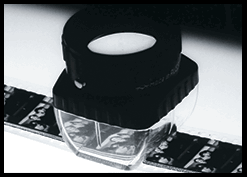MASTERWORKS OF AMERICAN AVANT-GARDE EXPERIMENTAL FILM 1920-1970 is a DVD / Blu-ray compilation (published by Flicker Alley), which provides a panoramic overview of the diversity of avant-garde filmmaking in the United States. A wide range of genres are represented – including city symphonies and diary films, as well as abstract studies and animation. Featuring 3 dozen films that date from 1920 to 1970, these avant-garde masterworks include works by artists Charles Sheeler & Paul Strand, Dudley Murphy & Fernand Léger, Robert Florey & Slavko Vorkapich, J.S. Watson, Jr. & Melville Webber, Mary Ellen Bute & Ted Nameth, Maya Deren & Alexander Hammid, Ian Hugo & Anaïs Nin, Ralph Steiner, Jay Leyda, Oskar Fischinger, Joseph Cornell, Rudy Burckhardt, Francis Lee, Helen Levitt, James Broughton, Kenneth Anger, Jim Davis, Hy Hirsh, Marie Menken, Francis Thompson, Hilary Harris, Bruce Baillie, Owen Land, Jonas Mekas, and Larry Jordan, and others.
The 1960s and 1970s were groundbreaking decades in which independent filmmakers challenged cinematic convention. In England, much of the innovation took place at the London Film-Makers’ Cooperative, an artist-led organization that incorporated a distribution agency, cinema space and film workshop. SHOOT SHOOT SHOOT takes its name from a telegram addressed to Jonas Mekas and the New York Coop, announcing the formation of the London Film-Maker's Cooperative in 1966. Within this unique laboratory, filmmakers were able to control every aspect of the creative process, and the physical production of a film – the printing and processing – became vital to its form and content. Many of the films made at the LFMC explored the physical nature of the film material itself. British filmmakers also made significant innovations in the field of ‘expanded cinema’, creating multi-screen projections, film environments and live performance pieces. SHOOT SHOOT SHOOT: BRITISH AVANT-GARDE FILM OF THE 1960S & 1970S (published by Re:Voir and Lux) contains key works by artists Guy Sherwin, Malcolm LeGrice, Peter Gidal, Stephen Dwoskin, William Raban, Chris Welsby, Liz Rhodes, and others.
In 1962, the proclamation of the Oberhausen Manfesto marked the beginning of the New German Film, paralleling a larger transformation occurring in French, Italian, Polish and Czech cinema of the time. Providing renewal during the period of decline of West German cinema, a younger generation of filmmakers – including Bernhard Dörries, Ferdinand Khitti, Peter Schamoni, Alexander Kluge & Edgar Reitz – presented an acute social conscience about postwar Germany, coupled with experiments in form. This 2-disc DVD set of THE OBERHAUSEN MANIFESTO presents 19 short films from 1958-1964 produced, directed, photographed or edited by one or more of the filmmakers who signed the manifesto.
◊
Additional Experimental Surveys of Related Interest from GME












